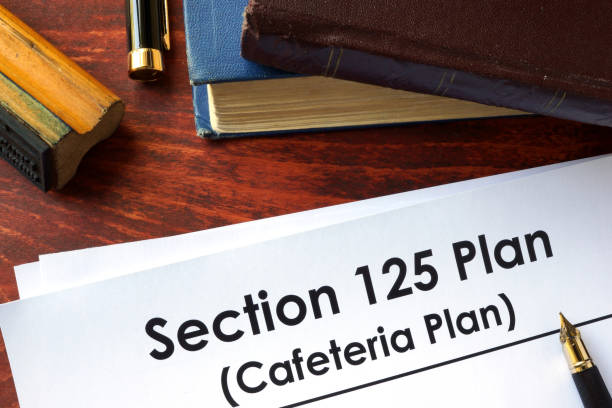Employer’s Guide to Cafeteria Plans: Maximizing Benefits for Your Workforce
Last Updated on March 25, 2025
Cafeteria Plans, also known as Section 125 Plans, are a flexible benefits solution that allows employees to choose between taxable cash compensation and various pre-tax benefits. These plans provide a strategic way for employers to offer valuable benefits while reducing payroll tax liabilities. This guide will explore the key components of Cafeteria Plans, including Premium-Only Plans (POP), Flexible Spending Accounts (FSA) and other essential cafeteria plan options.
What is a Cafeteria Plan?
A Cafeteria Plan is an employer-sponsored benefits plan that allows employees to select from a menu of pre-tax benefits. These plans help employees reduce taxable income while giving them flexibility in choosing benefits that best fit their needs.
Benefits of a Cafeteria Plan
- Tax Savings: Employees save on federal income taxes and FICA taxes, while employers reduce payroll taxes.
- Customizable Benefits: Employees can tailor their benefits based on personal and family needs.
- Cost-Effective for Employers: Employers can offer a competitive benefits package with minimal cost increase.
Types of Cafeteria Plans
1. Premium-Only Plan
A Premium-Only Plan (POP) is the simplest and most cost-effective type of Cafeteria Plan. It allows employees to pay for health insurance premiums with pre-tax dollars, reducing both their taxable income and employer payroll taxes.
Key Features:
- Employees contribute to medical, dental, and vision premiums on a pre-tax basis.
- Employers benefit from reduced FICA and FUTA taxes.
- Easy to administer and ideal for small businesses.
2. Flexible Spending Accounts
FSAs allow employees to set aside pre-tax dollars for eligible healthcare and dependent care expenses. FSAs provide significant tax advantages but come with certain restrictions.
Health FSA
- Covers medical, dental and vision expenses not covered by insurance.
- Contributions are “use-it-or-lose-it,” meaning unused funds may be forfeited unless the employer allows a grace period or carryover option.
- Subject to IRS contribution limits.
Dependent Care FSA
- Covers childcare, daycare, and elder care expenses.
- Contribution limits are set by the IRS and can be used only for work-related dependent care expenses.
- Helps employees balance work and family responsibilities.
3. Health Reimbursement Arrangement
A Health Reimbursement Arrangement (HRA) is an employer-funded account that reimburses employees for qualified medical expenses. Unlike FSAs and HSAs, only employers contribute to HRAs.
Key Features:
- Employers determine contribution limits and eligible expenses.
- Unused funds may roll over depending on plan design.
- Can be paired with high-deductible health plans (HDHPs) to offset costs.
4. Health Savings Account
A Health Savings Account (HSA) is a tax-advantaged account available to employees enrolled in an HDHP. Both employers and employees can contribute to HSAs.
Key Features:
- Funds roll over annually and remain with the employee even after leaving the company.
- Can be used for a variety of qualified medical expenses.
- Provides triple tax benefits: contributions are pre-tax, growth is tax-free, and withdrawals for medical expenses are tax-free.
5. Full Cafeteria Plans
A Full Cafeteria Plan offers a comprehensive range of benefits, including:
- Health Savings Accounts (HSAs) linked to High-Deductible Health Plans (HDHPs).
- Group-term life insurance.
- Adoption assistance programs.
- Disability and accident insurance.
- Employer-provided benefits credits.
These plans provide maximum flexibility but require careful administration to remain compliant with IRS regulations.
Compliance and Regulatory Considerations
IRS Requirements
- The plan must be written, outlining the benefits and participation rules.
- Employees must be given the option to elect between taxable and non-taxable benefits.
- Must adhere to nondiscrimination rules to ensure benefits are not disproportionately favoring highly compensated employees.
Use-or-Lose Rule & Grace Period
- FSAs typically follow a “use-it-or-lose-it” rule, meaning unused funds expire at the end of the year unless a grace period (typically 2.5 months) or carryover ($640 in 2024) is permitted.
How to Implement a Cafeteria Plan?
Cafeteria Plans often provide a win-win scenario for both employers and employees. They offer tax advantages, enhance employee satisfaction and make businesses more competitive in attracting and retaining talent. Employers considering implementing a Cafeteria Plan should work with a benefit administrator, such as BenefitMall, to ensure compliance with IRS regulations and to maximize the plan’s value.

